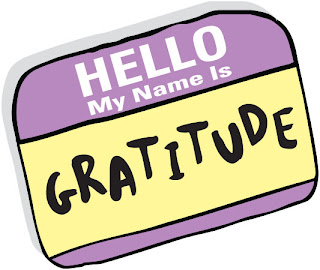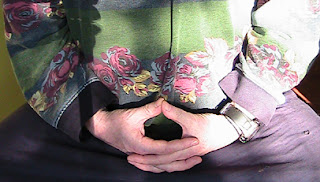The fast paced, competitive world we live in can be a brutal, isolating place. Most of us have become numb in some way as a means to survive it. Unfortunately, while shutting out things we don't want to take in, we also lose the ability to listen to our inner stirrings. I was very closed off in this way and it has been a big obstacle to coming into contact with myself. Fortunately, with time, practice and a strong desire to listen one can begin to tune into their inner stirrings and befriend them, rather than tuning them out and avoiding them. One practice that helped me begin to identify and accept the felt sense of emotions in my body is Chakra Balancing.

When I learned this, it was hard to find information about the chakras. There were a few books that gave the locations and some ideas about what each chakra related to, but the volumes of material about these energy centers that are available today just wasn't around. Plus, the tradition that I follow is all about self exploration, which means that we are encouraged to search but often are not told very much about what we will find. It is enough to know that inner peace lays out there somewhere. Exactly what each step toward it will be like we have to find out for ourselves. So, when we were taught chakra balancing, it did not come freighted with many details of what each chakra was meaning. It was enough to have some basic knowledge and then feel our own way through it. That said, having this sketchy map of the wheels of energy in the body and developing the desire to listen to what they were trying to tell me, opened my own rich inner realms to me in a way that has deeply informed my life ever since.
Here's how to do it:
Chakra balancing pranayama requires three things. 1) Knowing the basic locations of the chakras. 2) Knowing the color associated with each chakra. 3) Knowing the bij mantra of each chakra. The way it works is this. Find a comfortable seated position with the head erect, shoulders back and down. Breathe deeply and evenly. Focus on the location of the first chakra, the root chakra, muladhara in sanskrit. It is the seat of groundedness found just above the anus, in front of the tip of the spine. The bij mantra is lam, the color is red. Singing lam seven times in one breath in a mid tone that vibrates down to the area of focus, visualize the color red filling this area. Lam, lam, lam, lam, lam, lam, lam. Do this 3 times. Then go to the next.
2nd chakra, svadistana in sanskrit behind the pubic bone, seat of creative spirit and sexual expression. The bij mantra is vam the color is orange. Intone vam seven times in one breath in a mid tone that vibrates down to the area of focus and visualize the area filling with the color orange. Vam, vam, vam, vam, vam, vam, vam. Do this 3 times. Then go to the next.
3rd chakra, manipura in sanskrit, the solar plexus behind and a little above the naval below the sternum and inch or two in front of the spine. It is the seat of a desire for power, fame and material success. The bij mantra is ram, the color is yellow. Intone ram seven times in one breath in a mid tone that vibrates down to the area of focus and visualize the area filling with yellow light. Ram, ram, ram, ram, ram, ram, ram. Do this three times. Then go to the next.
4th chakra, heart chakra, anahata in sanskrit, the spiritual heart area just to the right of and behind the physical heart, a few inches ahead of the spine. It is the home of warm connection with others, affiliative nature and giving spirit. The bij mantra is yam, the color is green. Intone yam seven times in one breath in a mid tone that vibrates down to the area of focus and fill that area with green. Yam, yam, yam, yam, yam, yam, yam. Do this three times. Then go to the next.
5th Chakra, throat chakra, vishudha in sanskrit, behind the Adam's apple. It is the seat of communication, truth and rational mind. The bij mantra is ham, the color blue. Intone ham seven times in one breath in a mid tone that vibrates down to the area of focus and fill that area with blue. Ham, ham, ham, ham, ham, ham, ham. Do this three times. Then go to the next.
6th Chakra, third eye, ajna in sanskrit, between the eyebrows back near the base of the brain, an inch or two ahead of the spine. It is the place of intuitive knowledge. The bij mantra is om and the color is indigo. Intone om seven times filling the back of the head with indigo. Om, om, om, om, om, om, om. Do this three times. Then go to the next.
7th Chakra, crown chakra, sahasrara in sanskrit, at the top of the head. It is the place of connection with the divine, the infinite, the spirit realms. The bij mantra is OM and in this case we say it only once for the full length of the breath while filling the top of the head with violet. Do this one time only. OM.
Sit for a minute and feel the effects.
Regular practice of Chakra Balancing will make it easier for you to take in and accept the varied and rich messages your body sends you in the form of sensation. The first step in a dialogue is being able to listen. An important conversation with your body can begin here.
When you do this and have some positive experiences to share or any questions, I'd love to hear about it.



























